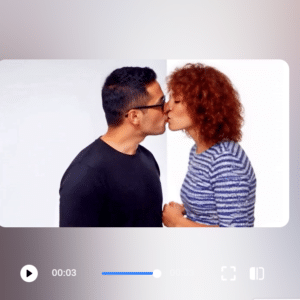Ways to bypass AI detectors
A Detailed Guide: Ways to Bypass AI Detectors.
As artificial intelligence (AI) continues to advance, so does the technology used to detect AI-generated content. From universities checking student submissions for originality to businesses verifying content authenticity, AI detection tools have become vital in maintaining quality and credibility.
However, there are times when bypassing AI detectors may be beneficial—such as enhancing readability or adding a human touch to AI-generated text for marketing purposes.
This article delves into effective and ethical methods for bypassing AI detectors, helping you to understand how to make AI-generated text more human-like without compromising integrity.
Understanding How AI Detectors Work
A. Overview of AI Detectors
AI detectors are designed to identify content produced by AI, aiming to prevent misuse and preserve originality.
Tools such as OpenAI’s AI Detector, Copyleaks AI Content Detector, and GPT-2 Output Detector OpenAI’s AI Detector, Copyleaks AI Content Detector, and GPT-2 Output Detector have become popular for spotting AI-written text in academia, journalism, and more.
B. Key Techniques Used by AI Detectors
AI detectors often employ natural language processing (NLP) and machine learning to identify patterns, such as repetitive wording, simplistic language, and predictable sentence structures.
These models compare content against large data sets, identifying language patterns commonly produced by AI. Understanding these patterns is essential for modifying AI-generated content effectively.
Common Methods to Bypass AI Detectors
A. Humanising Language: Making Text Sound Natural
The language used by AI often feels formulaic or overly formal. Humanising language means breaking away from predictable, rigid patterns. Here’s how you can achieve this:
Use Synonyms and Varied Vocabulary
AI-generated text can often repeat words and phrases, making it appear robotic. To combat this:- Swap out common terms for synonyms: Instead of “important,” try “crucial” or “essential.”
- Rotate descriptive terms: For instance, change “large” to “sizable,” or “beneficial” to “advantageous.”
- Use less typical words: Consider using words that AI might not default to, like “quintessential” instead of “typical.”
Using a resource like WordHippo can help you find unique synonyms that sound natural.
Add Idiomatic Expressions and Slang
AI-generated text usually lacks colloquial expressions, as it tends to produce straightforward, literal language. Try integrating:- Idioms: “Don’t put all your eggs in one basket,” or “a blessing in disguise.”
- Casual language and slang: Words like “mate” (British slang for friend) or “brilliant” (to express praise in British English) add a regional flair.
- Phrasal verbs: Substitute formal verbs with phrasal verbs, like “call off” instead of “cancel” or “look into” instead of “investigate.”
Use British English Variants and Expressions
If you’re writing for a British audience, using British English spellings and expressions can add authenticity. This includes:- Spelling variations: “Colour” instead of “color,” “favour” instead of “favor.”
- British-specific words: “Flat” instead of “apartment,” “queue” instead of “line.”
- Colloquialisms: Expressions like “a bit dodgy” or “bog-standard” can add authenticity and are unlikely in AI-generated text.
B. Modifying Sentence Structure and Complexity: Adding Variety and Depth
AI detectors can pick up on rigid or overly simplistic sentence structures. To bypass this, aim for varied and complex sentence patterns:
Vary Sentence Length
AI tends to produce medium-length sentences with uniform structure. Mixing up sentence lengths keeps the text dynamic:- Alternate short and long sentences: Use short sentences for emphasis and long, descriptive ones to provide detail. For example, a short sentence might be: “It was a big win.” Follow it with a longer sentence: “After months of hard work, the team finally achieved their long-awaited goal, marking a pivotal moment.”
Incorporate Rhetorical Questions
Rhetorical questions engage readers in a way that feels conversational and natural:- Examples: “Isn’t it time we consider the implications?” or “What does this mean for our future?” These questions break up explanatory sections and add a more human touch.
Use Complex Sentences with Clauses
AI tends to produce straightforward sentences without nested clauses, which are common in human writing:- Combining clauses: Instead of “The team worked hard. They achieved their goals,” try “The team, after months of relentless effort, finally achieved their goals, marking a major success.”
Break Grammar Rules Intentionally (Sparingly)
Humans occasionally use incomplete sentences for emphasis or effect, whereas AI is more grammatically rigid:- Use fragments strategically: “Not a bad idea. At all.” This style can make the text appear more spontaneous.
Utilise Subtle Transitions and Connectors
Instead of generic connectors like “and,” “but,” or “because,” try:- Sophisticated connectors: Words like “nevertheless,” “on the other hand,” and “moreover” create subtle, human-like shifts in ideas.
C. Introducing Unique Vocabulary and Niche Terminology
AI tends to generate general, broadly applicable language. By adding industry-specific or unique vocabulary, you can make the text appear more personalised:
Include Industry-Specific Jargon
Certain words are more common in specific fields, making the text more credible:- Technology examples: Use terms like “blockchain,” “end-to-end encryption,” or “asynchronous processes” in tech contexts.
- Medical examples: In medical writing, terms like “epidemiology,” “prognosis,” or “immunogenic” add depth.
Use Lesser-Known Words
AI-generated text often leans on a basic vocabulary, so using advanced or niche words can make the text sound human-written:- Examples: Instead of “helpful,” try “salutary,” or instead of “very important,” try “paramount.”
Add Local or Cultural References
If applicable, mentioning cultural aspects can give the content more human relatability. For instance:- UK-specific references: Include mentions of familiar UK landmarks, pop culture, or local events to give content a regional feel.
D. Editing Content for Flow and Tone: Achieving a Natural, Conversational Style
AI tends to generate a consistent, often formal tone. Adjusting this tone to be more varied and conversational makes it sound more human:
Use Contractions and Informal Language
AI text often avoids contractions, which makes it sound formal and detached. Including contractions where appropriate can improve readability:- Examples: Use “don’t” instead of “do not,” or “it’s” instead of “it is.”
Add Conversational Phrasing
Humans naturally use fillers and asides in speech, which AI models often omit:- Examples: Phrases like “to be fair,” “if you ask me,” or “honestly speaking” make the text feel informal and relatable.
Balance Formality with Casual Language
Balance between formal and casual expressions to add nuance. For example, instead of “furthermore,” try “what’s more” or “on top of that.”Include Emotive Language
AI text is typically neutral. Adding expressions of excitement or disappointment, even subtly, can make it sound more human:- Example: Instead of “This discovery is important,” try “This is a breakthrough that we’re incredibly excited about.”
E. Rearranging Sentence and Paragraph Order: Avoiding Predictability
AI-generated content often follows a clear, predictable structure. Altering the order of ideas within paragraphs can reduce predictability:
Reorganise Supporting Points
Instead of following a linear sequence, mix up the order of your points:- Example: Instead of listing benefits in a straightforward order, start with a counterpoint or a personal anecdote, then segue into the benefits.
Vary Example Placement
AI-generated text typically provides explanations first, followed by examples. Try inverting this by:- Starting with an example: “Imagine you’re managing a team of remote workers…” then explaining the general concept afterward.
Alternate Between Direct Explanations and Tangents
Human writing often goes off on short, relevant tangents, creating a less structured, more engaging flow:- Example: In a tech article, you might start explaining a concept and briefly digress to mention a relevant anecdote before continuing.
F. Inserting Personal or Anecdotal Details: Making Content Relatable
Personalising content with anecdotes, personal opinions, or casual remarks can make AI text feel more authentic:
Include Brief Personal Stories
Adding a short anecdote, even if fictional, creates engagement and humanises the content:- Example: “When I first tried using solar energy in my home, I didn’t expect it would save so much on my electric bill…”
Add Humour or Light Sarcasm
AI text is typically serious. Light humour or sarcasm, when used appropriately, makes content more engaging:- Example: “It’s as if the weather has a personal vendetta against solar panels—or maybe it’s just British weather.”
Write in the First or Second Person
Switching from third-person narration to first or second person brings a conversational tone:- Examples: “I think…” or “you might find…” Using “I” and “you” creates a sense of dialogue with the reader.
Offer Genuine Opinions or Preferences
Expressing opinions adds personality to the text. AI often avoids opinions to maintain neutrality:- Example: Instead of a neutral statement, try, “In my view, solar power is one of the most practical renewable energy sources we have.”
Tools and Resources for Modifying AI-Generated Text
A. Text-Editing Software
Use tools like Grammarly or the Hemingway Editor to polish language, tone, and readability. Grammarly can help refine vocabulary, while Hemingway Editor highlights complex sentences, helping simplify content for human readers.
B. Human Editing and Proofreading Services
Freelance editors on Upwork or Fiverr can help make AI-generated content more authentic. ProWritingAid (link) also provides editing support tailored for natural language flow.
C. Advanced AI Rewriting Tools
For AI-powered rephrasing, tools like Jasper and Writesonic offer creative options for adjusting content. Set these tools to “creative” or “unique” modes to add a more human flair.
Ethical Considerations When Bypassing AI Detectors
A. Responsible Usage of AI Bypassing Techniques
Modifying AI-generated content ethically ensures transparency and credibility. Use these techniques to refine readability or adapt tone, not to deceive or plagiarise. Misuse of these methods, especially in academic or regulated environments, could lead to serious consequences.
B. Applications Where Bypassing is Appropriate
There are legitimate uses for bypassing AI detection, such as making AI content more engaging or brand-specific. It’s important, however, to avoid using these techniques to bypass plagiarism checks in education or mislead others about content origins.
Conclusion
Understanding AI detectors and the methods to bypass them can benefit content creators, marketers, and professionals looking to humanise AI-generated content.
By adjusting language, tone, structure, and vocabulary, you can improve the authenticity of AI-generated text, ensuring it reads naturally while preserving your unique voice.
Remember, these techniques should be used ethically and responsibly, keeping in mind the potential implications of bypassing AI detection. As AI detection technology evolves, staying informed and adapting your methods will be key to maintaining content quality and originality.
FAQs
Why do AI detectors matter?
AI detectors help ensure content authenticity and prevent misuse in fields like academia, publishing, and marketing.Is it legal to bypass AI detection?
It’s generally legal to modify AI-generated text; however, bypassing detection unethically, especially in academia, can have serious consequences.Will AI detection technology keep evolving?
Yes, as AI generation improves, so will detection technologies to keep pace with the advancements.Can detectors truly recognise all AI-generated content?
While detectors are effective, they’re not foolproof. Adopting a human touch remains the best way to make AI-generated content feel authentic.























